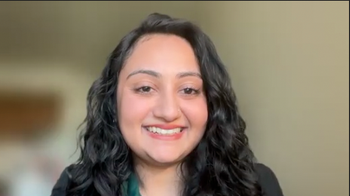
7-Day Dosing of Azacytidine Shows Benefit for Females With High-Risk MDS Not Seen in Males
Investigators from several medical centers in Japan were surprised to find that women with myelodysplastic syndrome (MDS) had a survival advantage from a 7-day dosing schedule, but that benefit compared with a reduced schedule was not seen in men.
The standard dosing schedule for hypomethylating agents, such as azacytidine, is 7 days, but some patients are given a 5-day dosing schedule, with little evidence to guide these decisions.
With this in mind, authors from several medical centers in Japan examined these questions: Do some groups of patients with
They published their findings in
For this study, 151 patients with MDS were retrospectively analyzed. The trial began with 186 patients, but 32 patients who did not live at least 112 days were excluded. The median age was 72 (range, 29-90) years, with men outnumbering women 2:1. MDS with excess blasts 1 (MDS-EB1) and MDS-EB2 were the most prevalent (62.8%). MDS with multiple lineage dysplasia accounted for 19.1% of the patients, and 10.4% of patients had acute myeloid leukemia with myelodysplasia-related changes, per World Health Organization 2016 criteria.
Based on the Revised International Prognostic Scoring System, 71.1% were judged to have high- or very-high-risk prognosis. The median number of azacytidine courses was 6, with a range of 1 course to 61 courses.
Across the entire group, overall survival was not significantly different between those taking the standard dose and those taking the reduced dose. However, when the investigators looked at certain subgroups, the standard dose benefited certain patients:
- When the team examined patients by gender, female patients had better overall survival (OS) when taking the standard dose vs the reduced dose (HR, 0.27; 95% CI, 0.090-0.79; P = .011)
- The standard dose was also more beneficial than the reduced dose for patients with platelet counts ≥ 40 x 103/mcL, with better OS (HR, 0.51; 95% CI, 0.26-0.99; P = .041)
- According to the investigators, “The union of female and preserved platelet count subgroups also benefited from standard-dose [azacytidine]”
Investigators were surprised by their findings.
“It was unexpected that the OS advantage imparted by the standard-dose was seen in female but not male patients. The activity of cytidine deaminase that inactivates [azacytidine] is known to be lower in females than males in a murine model,” they said.
They noted that as the active agent of the therapy is known to clear more quickly from males than females, based on a clinical trial, they would anticipate that azacytidine metabolism could differ between females and males, “and activity could persist in females if the dose is the same.” It is, however, unclear whether and how this knowledge can explain the differences in observed outcomes.
To test these findings, the investigators compared 7-day and 5-day treatment strategies prospectively in the JALSG MDS212 study. This was the phase 3 trial that was designed to compare the 7-day and 5-day dosing strategies on patients with MDS with refractory anemia with excess blasts (RAEB) and RAEB in transformation. Although the trial had to end prematurely overall due to poor recruitment, the trend among 172 patients did align with the earlier findings.
“That cohort showed the same tendency as the retrospective results,” the authors wrote.
Reference
Ogawa S, Sakamoto T, Matsuoka R, et al. Female and preserved platelet count subgroups of myelodysplastic syndrome patients benefit from standard-dose azacitidine. Cancer Rep. Published online November 28, 2023. doi:10.1002/cnr2.1938
Newsletter
Stay ahead of policy, cost, and value—subscribe to AJMC for expert insights at the intersection of clinical care and health economics.




























































